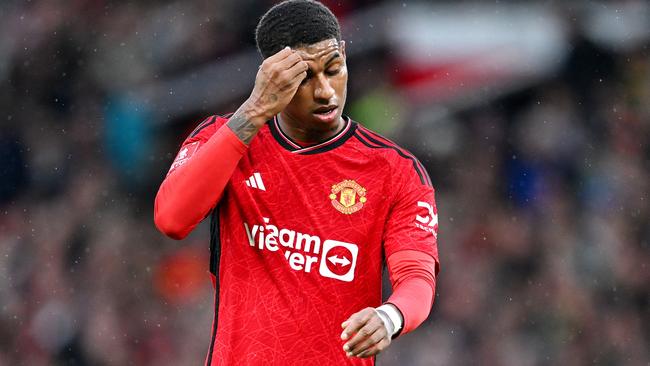Seven reasons why half of all transfers end in failure
The curious thing about transfers is that despite the enormous amount of money spent on them, many simply just don’t work out.

The transfer window shuts on Tuesday at 10am (AEDT) and while Premier League clubs are not expected to break the £815m ($1.6bn) record spend from January 2023, Manchester City alone have already shelled out £125m as they seek to rebuild their squad and prepare for the remainder of an intense season.
But the curious thing about transfers is that despite the enormous amount of money spent on them, many simply just don’t work out. In fact, the success rate is roughly 50 per cent which means new recruits are as likely to flop as they are thrive.
The reasons are plentiful and varied, anything from injury derailing a career to players falling out of favour with a manager, having difficulties settling in or even not liking the English weather.
Ian Graham, the former director of research at Liverpool, set out the seven most common problems as follows: current player is better than the new player; the player is not as good as first thought; the player does not fit the style of the team; the player is played out of position; the manager does not rate the player; the player has fitness issues; the player has personal problems.
If a club was 90 per cent confident in each of those elements being successful, once those probabilities are worked out you end up with a 48 per cent chance of overall success.
Analysis by Plaier, a Hamburg-based football data consultancy, reinforced this point. It found that, on average, half of all new players in the Premier League appear for 540 or so minutes (or six matches of game time) before being moved on.
This number includes every player that has at least one minute of playing time, taking in reserves and academy prospects called upon in tricky situations who would otherwise realistically not be regulars.
Nonetheless, the number is enormous, especially when considering that wage and transfer expenditure are the biggest outlays for Premier League clubs, their importance heightened in the era of Profitability and Sustainability Rules.
But is it possible to head off these issues before signing a player? Can clubs know for certain that they are not buying a dud?
Jan Wendt, the chief executive of Plaier, believes using data can help remove some of the uncertainty associated with buying players.
“We don’t look just at one single player and have a look at his metrics and compare these. We also say, against whom was he playing and with whom was he playing?” he says.
Measuring what players do is simple enough. Nowadays there is both event data (manually collected information that records every action by a player with the ball) and tracking data (automatically collected information captured by cameras, to document the actions of every player on the field at once) for clubs to use.
The answer, Wendt believes, is in a correlation engine - a computer tool which is designed to recognise patterns.
“A correlation engine creates chunks out of data,” he says. “The AI runs them in parallel and selects the best tool with the highest accuracy; it guarantees you the best outcome.”
So how can this link back to football, specifically in terms of scouting and increasing the likelihood of transfers succeeding?
“The first thing we can measure is a player’s performance, but we do not measure his capabilities as a player, we measure his efficiency in a system,” he says. “We do not care how well he dribbles or how well he shoots or how many goals he scores. That has no influence on the game itself.
“We measure his contribution or, in definite terms, his efficiency in connection with 11 players and with other players playing 11 opponents home and away in a specific league.”
By doing this, Wendt hopes that clubs can be much smarter in their recruitment. They will be able to analyse and model what sort of players suit a specific tactical system and how they interact with team-mates - even down to the likelihood that a player will succeed in a different league or role.
Soon, perhaps, that 50 per cent figure may start to rise.
THE TIMES



To join the conversation, please log in. Don't have an account? Register
Join the conversation, you are commenting as Logout